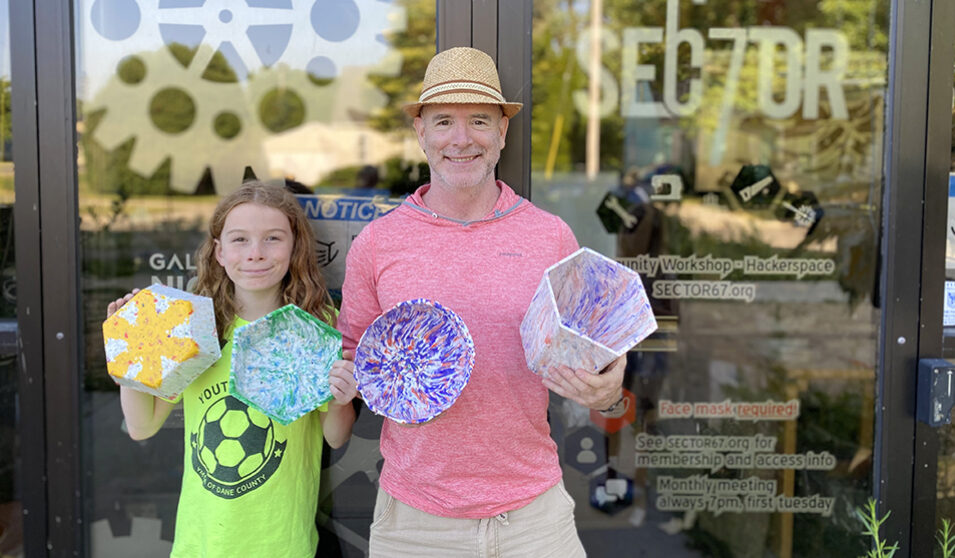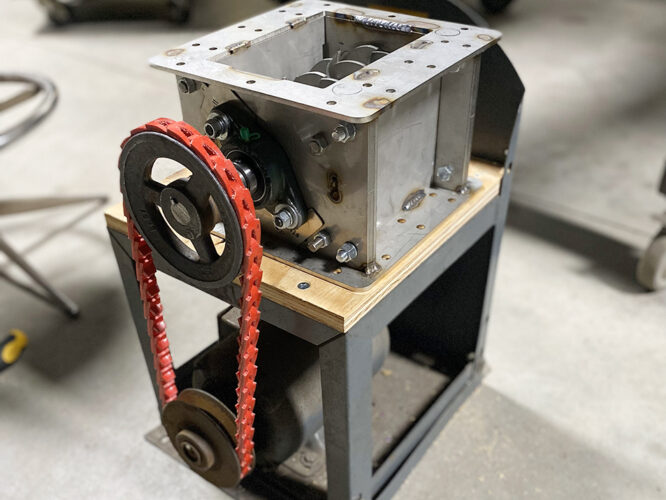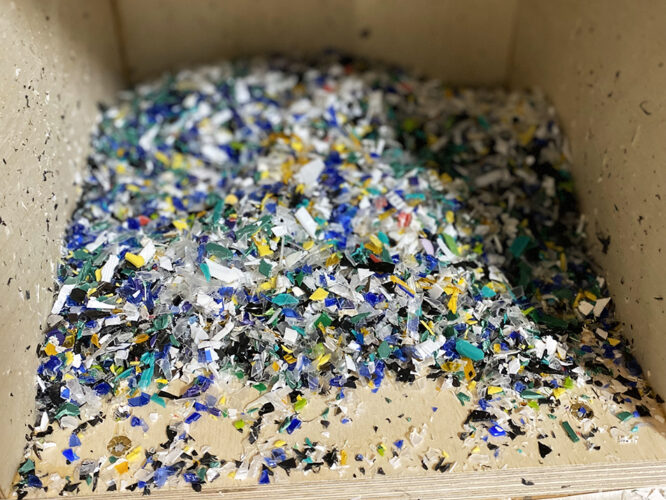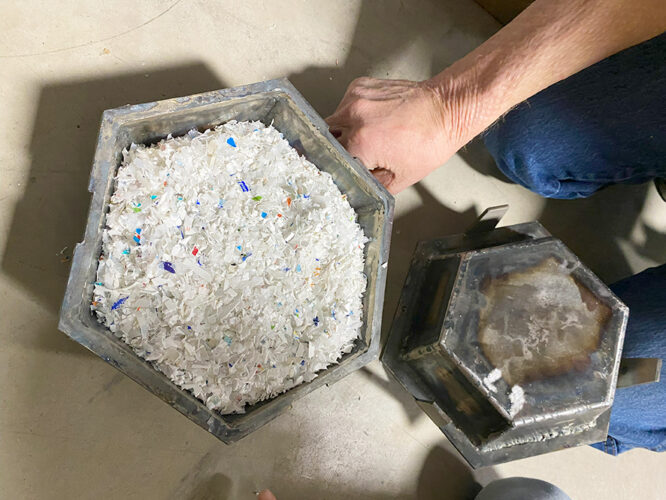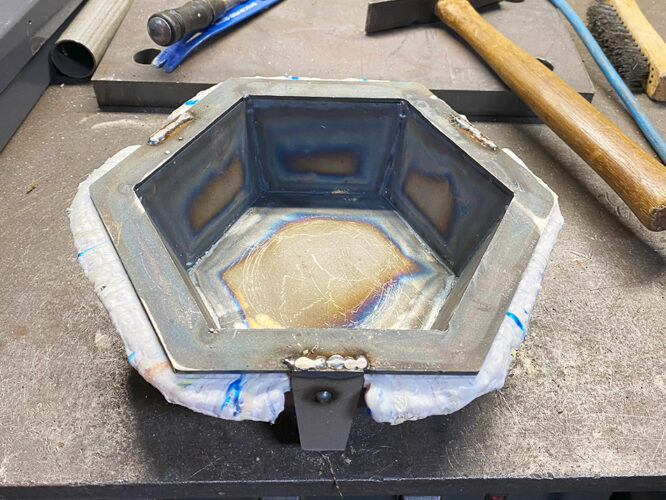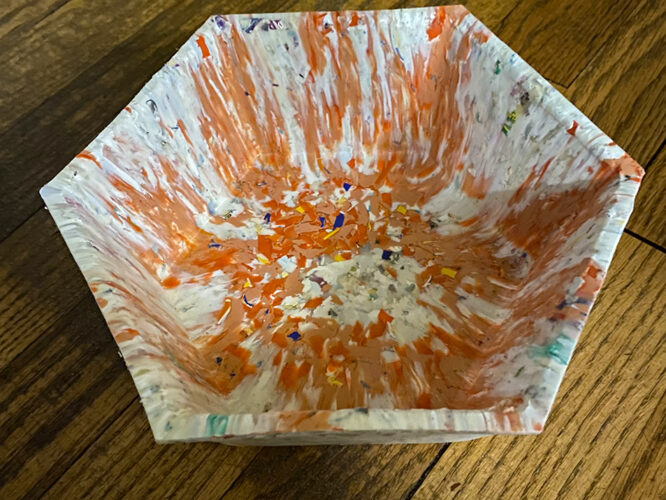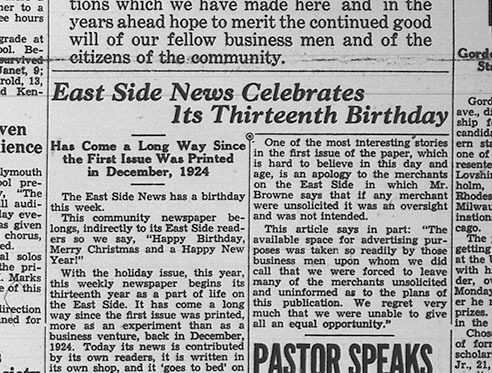By Isaac Nadeau, neighborhood resident
The other day, I drove over to Sector67 — the makerspace on Corry Street — with my 10-year-old son, Hollis. Normally, we walk, since it’s only about 10 blocks from our house, but this time we had more cargo than we could carry. Spotting a white plastic chest of drawers among a pile of junk on someone’s terrace, Hollis asked me to pull over.
“We can use this,” he said, as we gave it a once over.
“I don’t know,” I said. “I don’t think it’s broken.”
That’s the kind of conversation we’ve been having lately. For almost a year now, Hollis and I have been spending Wednesdays after school at Sector67 working on a community-based plastic recycling project. Our eyes have become tuned to thrown-out plastic and whether we might be able to give it new life.
Last summer, as we were rinsing out a yogurt tub to be thrown into the plastic recycling bin and dragged rumbling on plastic wheels out to the curb, Hollis and I wondered where all that plastic would end up.
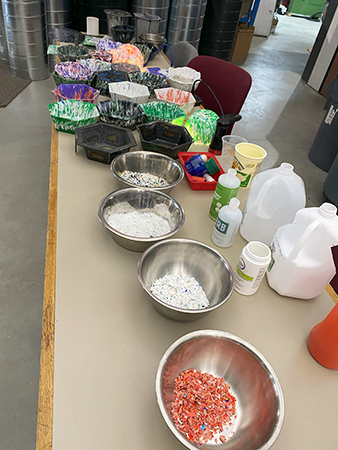
While the specific numbers vary depending on the source and the rates of recycling differ from community to community, several recent reports on the state of plastic recycling come to the same disappointing conclusion. Despite sincere efforts to recycle, most of the plastic that goes into the recycling bin is never recycled. According to a report issued by the Environmental Protection Agency in 2020, only 8.5% of plastics are recycled. Some recent analyses suggest that the problem is far worse.
That yogurt container, for example, was made of polypropylene (PP), or No. 5. Most communities in the U.S. don’t even attempt to recycle PP and only about 1% is actually recycled. The rest is either incinerated, accumulates in waterways or ends up in a landfill. A 2017 article in Science Advances stated that from 1950 to 2015, about 4.9 billion metric tons of plastic had accumulated in the environment or in landfills, a number projected to reach 12 billion metric tons by 2050 if current trends continue.
Last August, Hollis and I visited the Dane County landfill to take a tour up the mountain of trash itself. The folks managing the landfill are working with what they have. There is a plant on-site to harvest the methane gas that the landfill produces. They compress and contain as much as trash as they can. But standing amid the prairie restoration at the top of the landfill, where we could see for miles, the east side of Madison stretching outward to the Capitol, we learned that the landfill is almost full. In less than 10 years, a new site is planned to be opened across U.S. Highway 12.
Hollis and I got a membership at Sector67 shortly after that tour. As it happened, Chris Meyer, the founder of Sector67, had received a neighborhood grant from the Schenk-Atwood-Starkweather-Yahara Neighborhood Association to work on a small-scale plastic recycling project. Over the past year, Hollis and I have been working with Meyer and several other generous members of the makerspace to bring this idea to fruition.
The basic process
We built a plastic shredder, we learned — through trial and error and with the help of a worldwide community of like-minded people — how to build a mold and melt the plastic to make beautiful things. Currently we are mostly making bowls and flowerpots. But the possibilities are endless. The flowerpots are available at the Madison Greenhouse Store on Williamson Street.
These days, several neighbors come by to drop yogurt containers, takeout clamshells and other plastics into the cracked laundry baskets (also plastic and scrounged from neighbors) on our porch. When we have enough to constitute a “load,” we pile it into the car and zip over to Sector67.
In the end, we did stuff that plastic chest of drawers into the back seat, among the plastics piled high. Unlike its fellow passengers, the chest of drawers would escape the shredder.
“Maybe,” Hollis said, “we could use it as a display case. And if it breaks, we can recycle it!”

